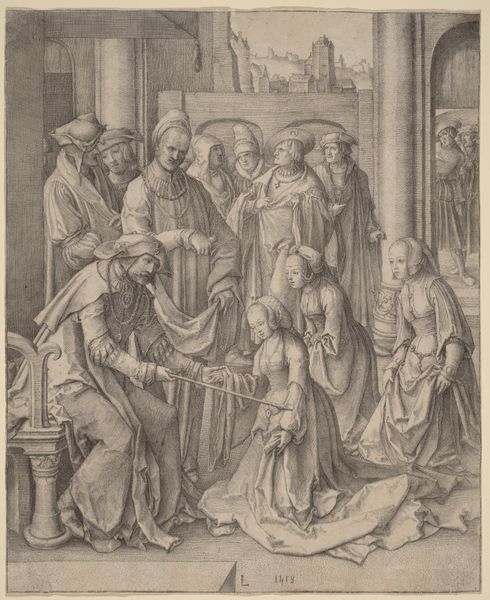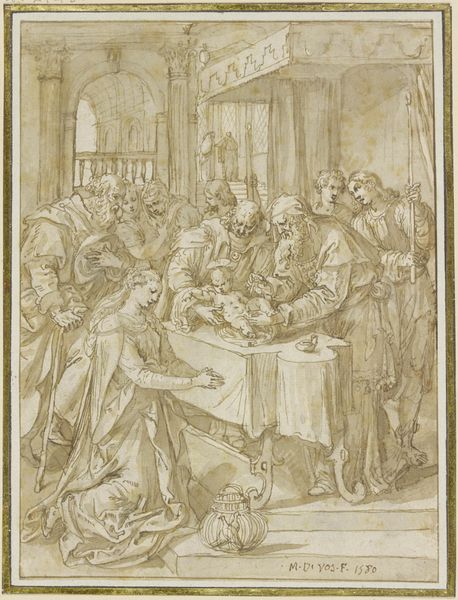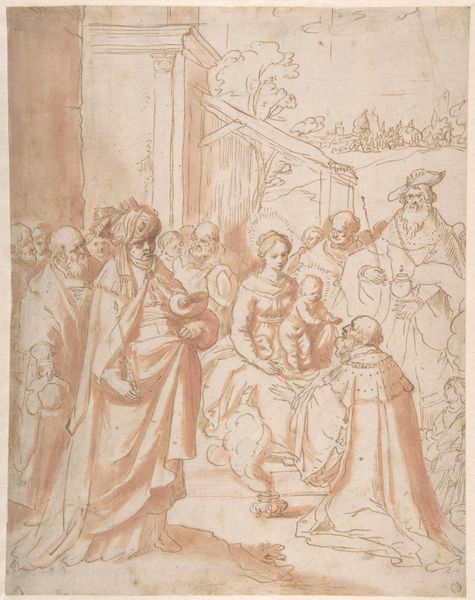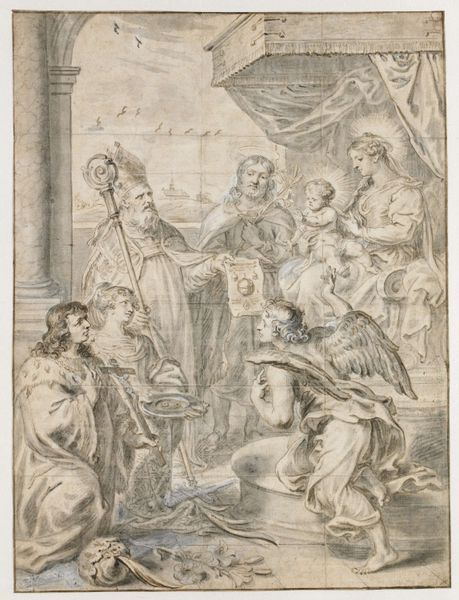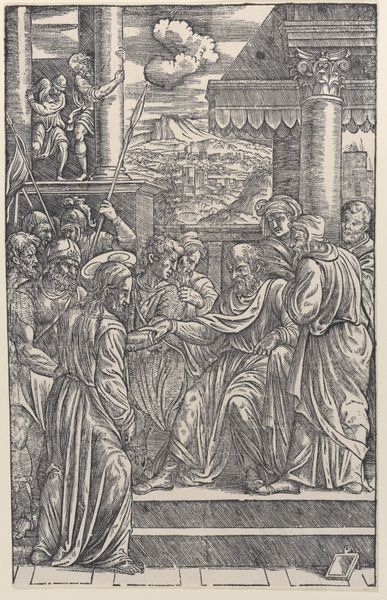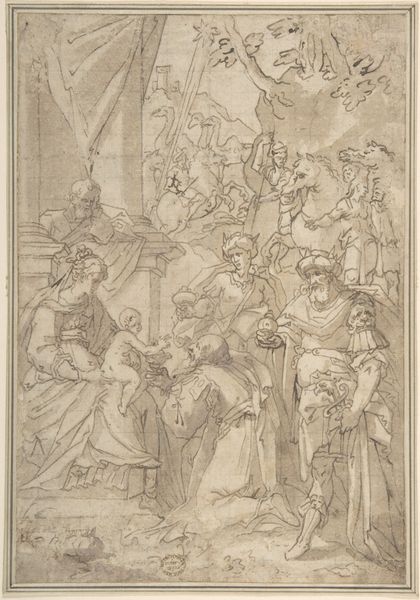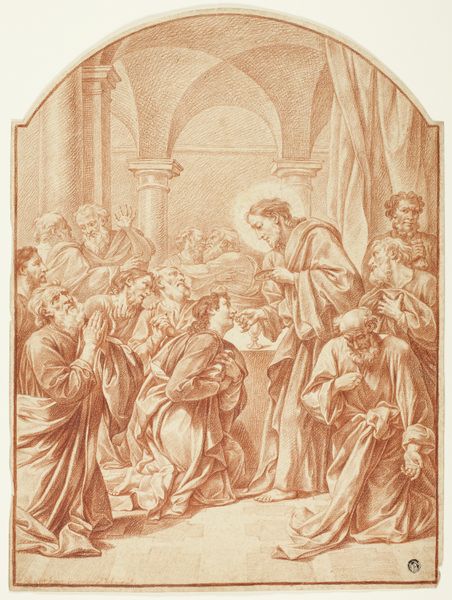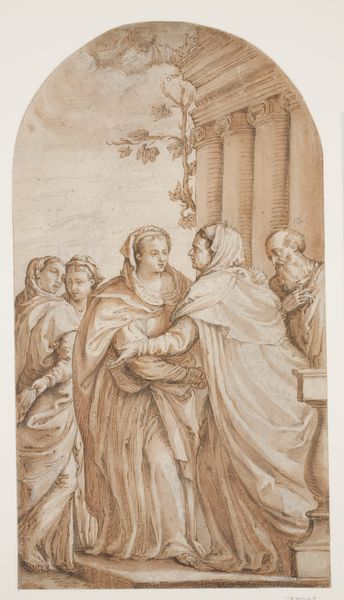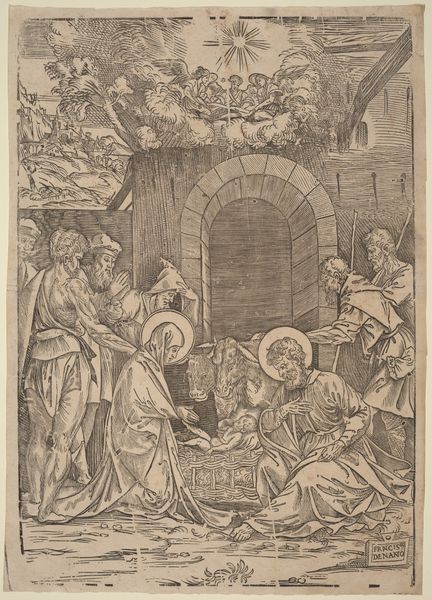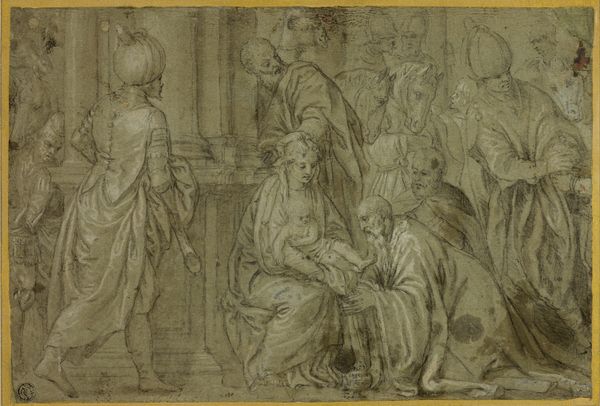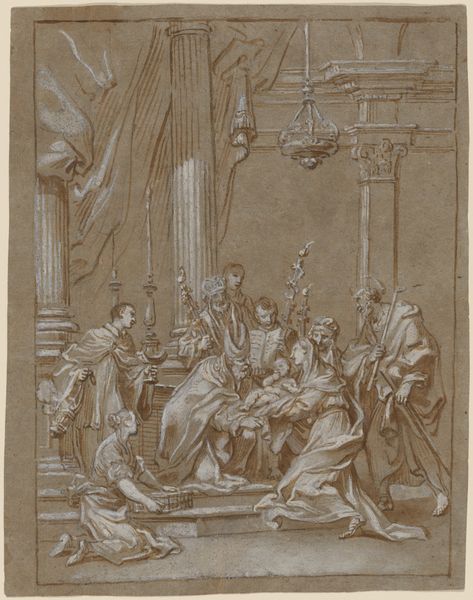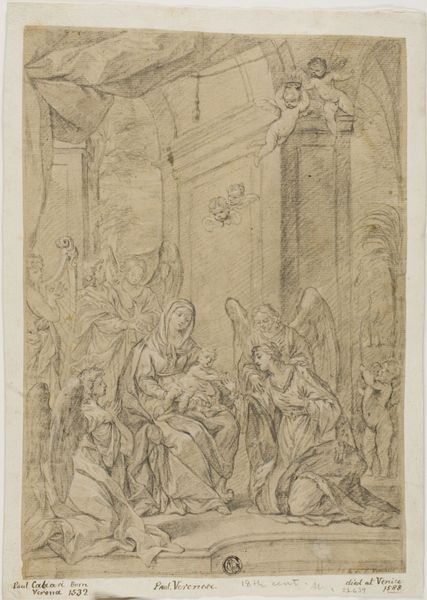
drawing, print, engraving
#
drawing
# print
#
figuration
#
history-painting
#
northern-renaissance
#
engraving
Dimensions: sheet: 10 7/8 x 8 7/8 in. (27.6 x 22.5 cm)
Copyright: Public Domain
Curator: Welcome. We’re looking at Lucas van Leyden’s engraving, "Esther Before Ahasuerus," created in 1518. It depicts a scene from the Book of Esther, where Esther bravely approaches the king to plead for her people. Editor: My first impression is one of intricate detail. The lines are so delicate, yet they convey such volume and depth, even in the rendering of fabrics and textures. It’s surprisingly theatrical. Curator: Absolutely. Consider the power dynamics at play. Esther, a woman of Jewish origin, risks her life by appearing before the Persian King Ahasuerus without being summoned. Her defiance of protocol is an act of immense courage, speaking to the precarity faced by marginalized groups. Editor: And the king's sceptre…notice how the strong diagonal line of the sceptre bisects the composition. This use of line creates tension, yet it also frames Esther's humble posture. I am fascinated by how a single element can direct the eye. Curator: The averted gazes of the surrounding figures suggest the tension, and a wider understanding of courtly behavior and hierarchy. Note, too, that Esther's actions are critical not only for her personal survival but also for the collective fate of her community, challenging notions of power that position some lives as expendable. Editor: Indeed. Furthermore, Van Leyden uses a restricted tonal range to unify the visual field; and I am drawn to his consistent treatment of light. The details of architecture in the background lend the artwork greater complexity by setting it in an imagined, historically relevant location. Curator: The print functions as more than just a record of a biblical story; it engages with broader socio-political issues related to identity and the courage to speak out. This allows us to see the potential resonance in modern discussions of activism and social change. Editor: In a way, this engraving captures the interplay between graphic elements and dramatic potential inherent to storytelling. Ultimately, the power of formal structures enhances Van Leyden's rendering, so that this biblical tale truly resonates on both narrative and aesthetic registers.
Comments
No comments
Be the first to comment and join the conversation on the ultimate creative platform.

